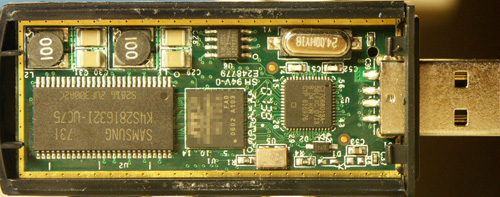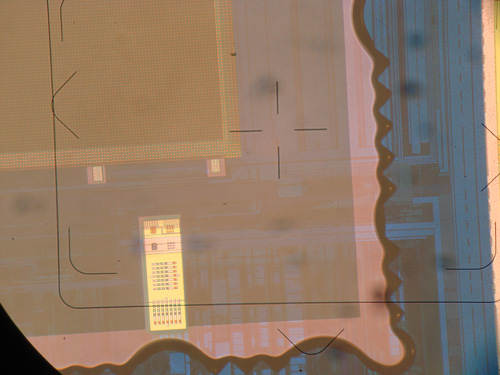The ware from August 2008 is an Ovonics CMOS image sensor, specifically, the OV7670. This part is used in a VGA camera assembly, of the type found in notebooks and cell phones. These things are unbelievably cheap, around $2 in production volume, and very convenient to use — they have a glueless, direct digital interface. I was taking apart one of these modules to strip out the IR filter, when I cut too deeply into the glue that held the assembly together and knocked the chip off of the PCB. So, it ended up under my microscope and on Name that Ware.
Most CMOS image sensors have sensitivity well into the IR spectrum, so typically camera modules ship with an IR filter installed to prevent image colors from being distorted by stray IR light. However, if you can remove the IR filter, the camera is sort of usable for night vision applications, especially if it is combined with an active IR emitter array. It turns out that it’s surprisingly easy to pry the IR filter out and button up the module again, once you know how deep to cut. I’m thinking about maybe modding my Blackberry’s camera by removing its IR filter, and replacing the white LED flash unit with an IR LED flash so that I can take halfway-decent pictures in the dark, albeit in monochrome.
Picking a winner for last month’s competition is difficult, because so many answers were basically correct. For lack of a better reason, J. Peterson is the winner because he correctly identified the RGGB pattern of gels as a Bayer filter pattern. I was actually wondering what the correct term was for that filter pattern, so thanks! And congratulations, email me to claim your prize!


